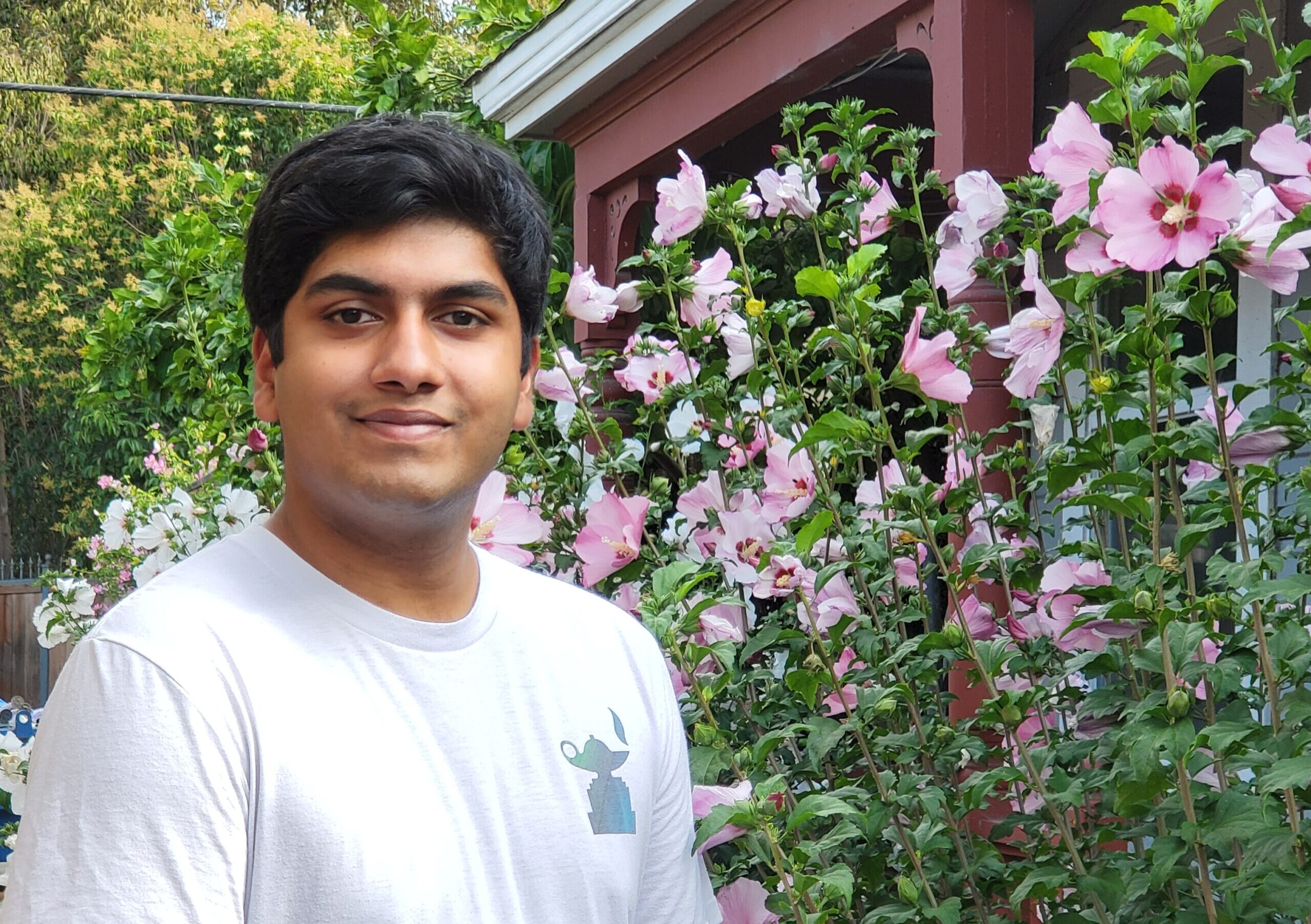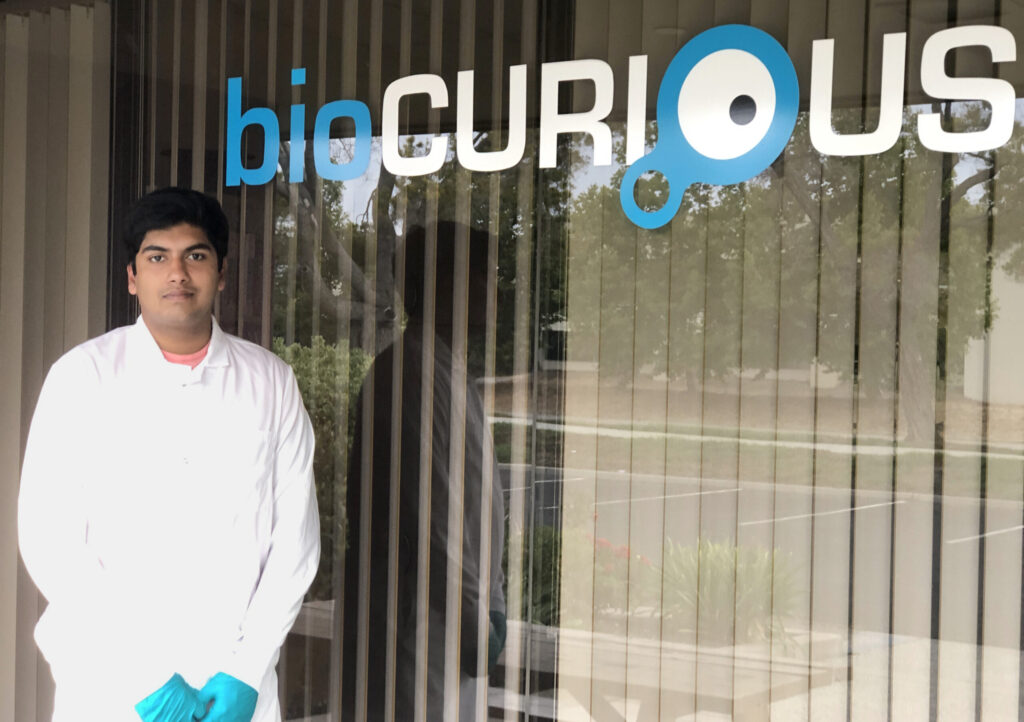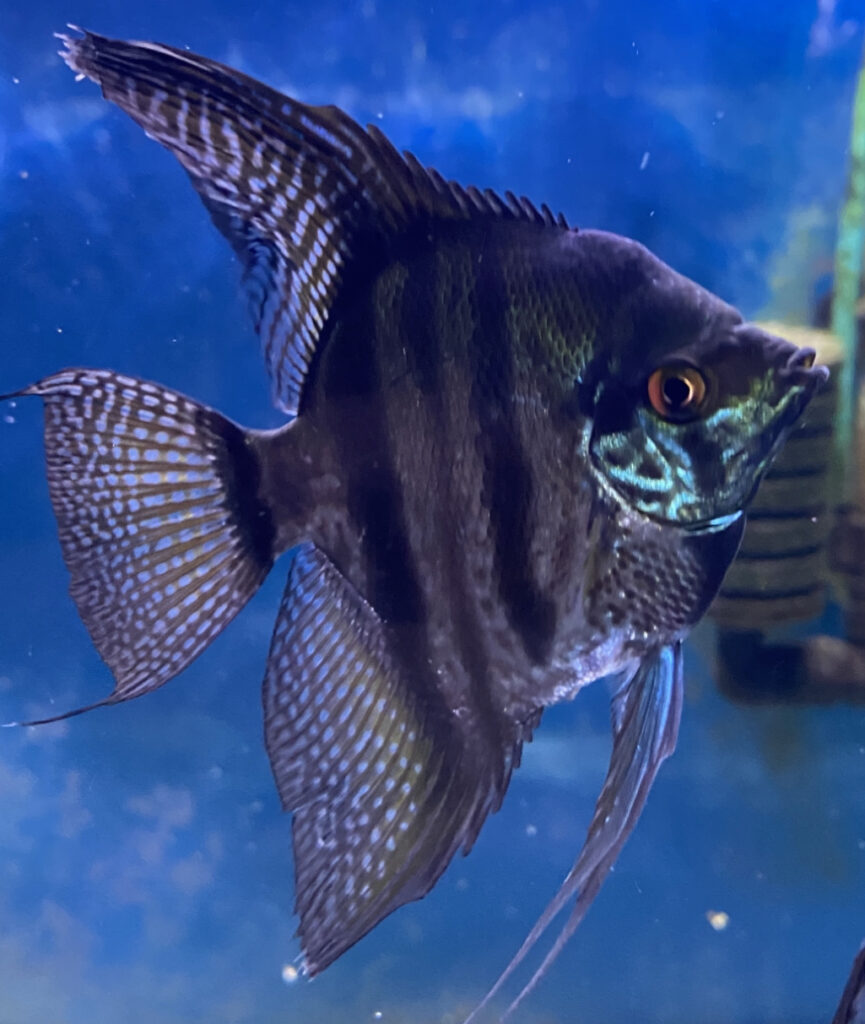Driven by a fascination with his pet fish named Calvin, high school student Indeever Madireddy became the first person to sequence the genome of a freshwater angelfish.

Several weeks ago, Rich Abdell, Ph.D., a bioinformatician at the University of Pennsylvania, sent out a tweet to his 2,100 followers: “From what I can tell, the first freshwater angelfish genome was just published by a high schooler using a MinION to sequence the DNA of his dead pet.”
Within a day, the post had amassed thousands of likes and over 500 retweets, as scientists from all over the country chimed in to express their support.
“I literally love everything about this, full stop,” replied an assistant professor. “What an incredible example of what can be achieved with early access to molecular biology resources,” a neuroscientist also tweeted in response.
As the tweet continued circulating online, a friend alerted 17-year-old Indeever that he was going viral.
“My first thought,” Indeever said, “was, ‘oh gosh, what did I do?’”
Indeever is a senior at BASIS Independent Silicon Valley in San Jose, California. He’s an avid fishkeeper, which he layers on top of his other interests: riding his bike, conducting research projects, competing in science competitions, and helping with his two younger brothers, who, he quipped, are “quite a lot of work.”
We recently spoke with him about his approach to work, how crowdfunding and community labs can help democratize science, and why young researchers “just need to get started.” The conversation has been condensed and edited for clarity.
How did you get interested in genetics?
It was kind of spontaneous. I’ve always really been into fishkeeping and raising fish. I had a pair of angelfish that would always lay eggs, but they’d never hatch. So, I decided that the next time my angelfish laid eggs, I would raise the baby fish to ensure they would survive, which is exactly what I did in August 2020. I used a pipette, moved the eggs to a new aquarium, and raised the fish until they were fully grown.
Unfortunately, one of the angelfish that I raised died in March 2022.

I do my research at BioCurious which is a local biohacker space for DIY biologists. There I always saw many biologists doing sequencing work. This made me curious about what sequencing had been done with fish. Weeks before my fish died I learned that no one had sequenced the genome of a freshwater angelfish. At the time, no reference genome was available through the NCBI (National Center for Biotechnology Information).
So when my pet fish died, I decided to sequence its genome. And that’s where this all took off.
Before we continue, what was your fish’s name?
His name was Calvin.
Talk us through your sequencing work and your research process.
When Calvin died, I rushed him to the BioCurious lab so I could freeze him in the -80°C freezer to keep his DNA stable.
Then I needed to figure out how to sequence. I spent the next month doing background research and learning genomics from scratch.
(Editor’s note: Reader in case you forgot, Indeever is a high school senior.)
I’ve had prior research experience in molecular biology and I’m familiar with the lab equipment available in my local lab. I came across nanopore technology and its long-read sequencing ability. This technology would allow me to de novoassemble the genome. So, I purchased a new nanopore sequencer and flow cell.
I used a New England Biolabs Genomic DNA extraction kit to extract DNA from Calvin’s muscle tissue. I did have to do some trial and error and experiment with the standard protocol to figure out what would give me the best DNA yield.
After I extracted the DNA, I had to prepare the genomic library and the DNA so that the nanopore device could properly sequence it.
I worked for two weekends in the lab to obtain the raw sequencing data. The bioinformatics work that came after that took a lot more time—around two months.
And then, I had to screen the genome to ensure there weren’t any contaminants.
Did you learn or find anything else during your sequencing work?
Interestingly, there was a bacterial contaminant in my sequencing reads.
Could that have been the cause of Calvin’s death?
It could have been. I was hesitant to say that in the paper. Bacteria is a common fish pathogen that’s just naturally present in aquariums and on fish. At the same time, it’s an opportunistic pathogen, and if a fish is already ill or injured, the bacteria will exacerbate the problem and kill it.

So, unfortunately, I couldn’t say for sure. I wish I could, but I just pointed it out in my paper and left it at that. It would have been interesting to see if that was true.
In addition to performing your work at a community lab, you also relied on crowdfunding. Can you tell us more about that?
I used a lot of my own funds for this research, but I also fundraised on experiment.com so that I could buy another flow cell for the nanopore sequencer to increase my sequencing yield.
What did it feel like to open Twitter and discover your project had generated a lot of interest?
It was crazy! I wasn’t on Twitter. In fact, the only time I tweeted was for the fundraising I was doing for this project.
A friend of mine reached out and said, ‘hey, do you know you’re going viral on Twitter?’ And I thought, ‘oh gosh, what’s going on? What did I do?’ And then it turns out it was the angelfish work!
It’s been a great experience. I’ve met so many new scientists and researchers; it’s surreal.
Why do you think it resonated with people?
I’ve noticed that there’s a big movement in the scientific community toward democratizing science and making it accessible to all. And I think this project exemplified that.
When you’re not in the lab sequencing genomes, what do you like to do for fun?
I raise a lot of fish. I have over 100 fish—koi, angelfish, goldfish…I even have a bichir, which is a kind of an eel, but way cooler.
Outside of fishkeeping, I do a lot of other research work. One of my previous projects was about CRISPR and how we could use the CRISPR-Cas9 enzyme as a tool to augment the human immune system and similarly protect against viral infections. I competed in various science competitions with that research.
I also have two younger brothers, who are quite a lot of work! And I enjoy riding my bike. I really like electric bikes, actually, so that’s what I do in my free time.
Any future research projects on the horizon?
Right now, I’m applying to colleges, and that’s taking up most of my time. I’m interested in sequencing the transcriptome of the angelfish, so I think that’s next.
What advice do you have for young researchers?
There is so much I want to say, but for starters, don’t be intimidated by the research world. It might be easy to see my research and wonder how I did it, but this was not my first research project. Throughout high school, I conducted independent research work.
Anyone can do research; you just have to get started. Find what you’re interested in and pursue it. Don’t be afraid of what other people think or even what the results will be.
Also, setbacks are expected. A setback simply means that you have reached a point where you are pushing the boundaries of science. It is a good sign and that must not deter you. You should definitely try to anticipate issues and find multiple pathways to work through or around them.
Finally, learn from the reviews, wisdom, and experiences of others while believing in and improving your own judgment and abilities. No one can learn everything by themselves, and it’s often other people who have interesting insights.
The nice thing about open science and the internet and computers and all that is that you can do research anywhere. From a lab, from home…anywhere!



